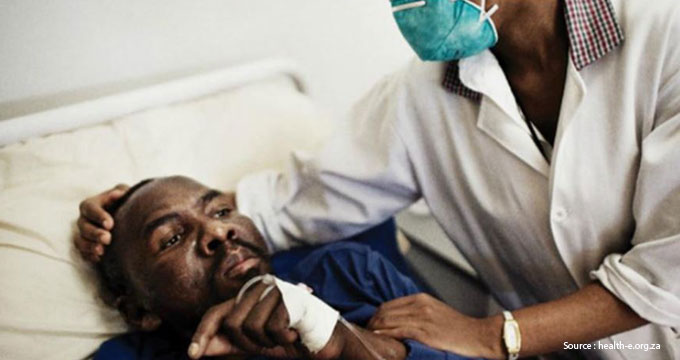
Tuberculosis (TB) is an infectious disease caused by the bacterium Mycobacterium Tuberculosis (MTB). TB is an air-borne infectious disease, which primarily affects the lungs.
Once rare in developed countries, tuberculosis infections began increasing in 1985, partly because of the emergence of HIV, the virus that causes AIDS. HIV weakens a person’s immune system so it can’t fight the TB germs.
The World Health Organization (WHO) declared Tuberculosis (TB) a global emergency in 1993 and it remains one of the world’s major causes of illness and death. It is therefore important to raise public awareness about the devastating health, economic and social consequences of this disease.
There are two types of TB conditions: Latent TB infection and TB disease.
TB bacteria can live in the body without making a person (the host) sick. This is called latent TB infection. In most people who breathe in TB bacteria and become infected, the body is able to fight the bacteria to stop them from growing. People with latent TB infections do not feel sick, do not have any symptoms, and cannot spread TB bacteria to others.
If TB bacteria become active in the body and multiply, the person will go from having a latent TB infection to being sick with TB disease. For this reason, people with latent TB infection are often prescribed treatment to prevent them from developing TB disease.
How TB is spread
TB is spread through the air, just like a cold or the flu. When a sick coughs, sneezes, talks, laughs, or sings, tiny droplets that contain the germs are released. If you breathe in these germs, you get infected.
TB is contagious, but it’s not easy to catch. The germs grow slowly. You usually have to spend a lot of time around a person who has it. That’s why it’s often spread among co-workers, friends, and family members.
Tuberculosis germs don’t thrive on surfaces. You cannot get the disease from shaking hands with someone who has it, or by sharing their food or drink.
Symptoms of TB
A bad cough that lasts 3 weeks or longer
Pain in the chest
Coughing up blood or sputum (mucus from deep inside the lungs)
Weakness or fatigue
Weight loss
No appetite
Chills
Fever
Sweating at night
Treatment of TB
TB prevention consists of several parts. The first part of TB prevention is to stop the transmission of TB from one adult to another. This is done by identifying people with active TB, and then curing them through the provision of drug treatment. With proper TB treatment someone with TB will not be infectious and so can no longer spread the disease to others. The second part of TB prevention is to prevent people with latent TB from developing active, and infectious, TB disease.
Anything which increases the number of people infected by each infectious person, such as ineffective treatment because of drug resistant TB, reduces the overall effect of the main TB prevention efforts.
The presence of TB and HIV infection together also increases the number of people infected by each infectious person. As a result it is then more likely that globally the number of people developing active TB will increase rather than decrease.
The third part of TB prevention is TB infection control. This means preventing the transmission of TB in such settings as hospitals & prisons. The pasteurization of milk also helps to prevent humans from getting bovine TB.
Hi! I am a robot. I just upvoted you! I found similar content that readers might be interested in:
https://www.tbfacts.org/tb-prevention/
Downvoting a post can decrease pending rewards and make it less visible. Common reasons:
Submit